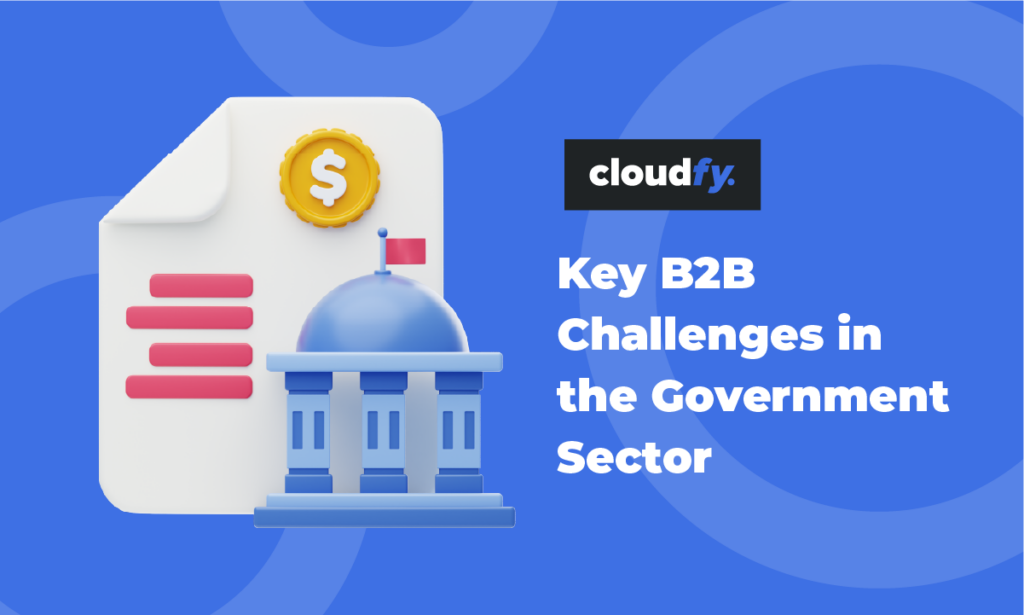B2B ecommerce in the US leads the way in terms of adoption and market size. By gross merchandise value (GMV) North America might be behind Asia but it is well ahead of Europe and the rest of the world.
Industrial sector B2B buying in the US
The top sectors driving economic growth in the US during the last decade have included healthcare and pharmaceuticals, IT and computing, construction, retail and consumable (non-durable) products.
Buyers have high expectations and changing needs; before the coronavirus pandemic they were already moving away from more traditional buying styles towards online purchasing. Now the pace of change has increased dramatically.
Industrial B2B buyers will research at least two websites before making their purchase decision, making online visibility increasingly important. This is just one reason why many B2B companies are moving online; it’s where their customers are to be found.
Priority technologies for the industrial sector
Many B2B businesses in the industrial sector see ecommerce as a top priority to maintain growth and to support their after-sales market.
They also recognize the importance of other technologies to support business goals, including big data, artificial intelligence, the internet of things (IoT), and selling services as products.
In addition, there are many new practices and processes that will affect the future of the industrial sector such as robotics and process automation, autonomous transport and 3D printing.
Some industrial businesses are already exploring the transformational potential of combining these technologies.
Barriers to B2B ecommerce implementation in the industrial sector
While the value of online ordering is recognized, adoption and implementation of B2B ecommerce software for industrial products still remain a long way behind other sectors.
Reluctance to change existing commercial relationships with dealer networks or large customers is one barrier. However, when an ecommerce channel is well implemented and designed to meet customer needs it often improves relationships and increases lifetime values.
A further barrier is the expectation that online selling and self-service will lead to business-wide disruption and changes to internal structures. This is especially focused on the implications for sales representatives and customer service teams. However, an internal shift to a retail-like emphasis on customer needs can also significantly improve relationships.
Another concern is cost. Many businesses don’t feel that they have in-house capabilities to cost-effectively implement an online sales process. As a result, they anticipate that the investment needed will be excessive.
The business case for ecommerce in the industrial sector
According to Forrester Research, B2B ecommerce transactions will reach $1.8 trillion by 2023; more than 17% of all B2B sales in the US. If you don’t embrace ecommerce you will miss more and more opportunities the longer you delay.
This risk will be compounded if you are unable to meet the growing demand for around-the-clock operations.
Once you have implemented an ecommerce solution, you will have access to data about buying trends and behavior as well as individual buying histories to inform your strategy for growth and improved customer experience.
When you integrate your ecommerce platform with other business systems you will reduce the need for manual data entry, reducing errors and minimizing administration. This will allow your back-office team to spend more time on added value, customer-focused activities.
Implementing ecommerce in the industrial sector
While it might be straightforward to sell complete manufactured products online, in the industrial sector buyers’ requirements are often detailed and might even be unique.
Online selling might seem daunting if your catalog includes thousands of parts. Product data will need to be extracted from your product information management (PIM) or enterprise (ERP) system in a format that can be displayed meaningfully online.
Accuracy will be essential to meet your buyers’ expectations and to avoid purchasing and dispatch errors. If your legacy systems are several years old, you might find they are no longer fit for purpose. Integrating your back-office systems and processes with your ecommerce platform will create a seamless purchasing experience and streamline your operations.
To implement a comprehensive ecommerce strategy, all aspects of your operation need to be considered. As well as whole goods, your aftermarket parts and consumables market and configured assemblies will need to be included in your overall plan.
Step
1: To move ahead, the first step is to appoint an executive champion for the project who will be responsible for implementation. Their role will be to overcome the potential barriers and to focus on the business benefits that ecommerce will deliver.
Step 2: The concern that you might not have in-house skills to deliver a strategic ecommerce solution successfully is a valid one. Once your champion has defined the benefits you expect from ecommerce the next step is to identify a business partner with a proven track record of successful implementation in the industrial sector. Ideally, they will become part of your business development strategy, so it’s worth taking your time over this decision.
Step 3: Understanding your buyers’ needs and expectations is essential. These are often defined by their personal shopping experiences. While their professional buying requirements are very different, they will want intuitive search functions, personalization, easy checkout and payment options. As registered users they will expect to have easy access to quick re-ordering, past purchase histories, special offers and promotions tailored to their needs.
Step 4: Many business buyers say that their buying journey is complicated and can involve as many as nine decision makers with different roles. Your solution must make it easy for buyers to build their own business case and to share it with others. Flexible workflows according to product type and value will make their lives easier and build loyalty.
Step 5: Transform your business to provide end-to-end solutions for your buyers by adding integration with warehousing and logistics. At the same time, you will streamline all your business processes to improve efficiency and profitability.
Start your ecommerce journey
Keep your business ahead of your industrial competitors with an ecommerce solution that has been designed from the outset to meet B2B needs, like Cloudfy.
Cloudfy is a software as a service (SaaS) solution with integrations for leading business systems like NetSuite and Microsoft Dynamics. You can use the powerful application programming interface to meet your customization needs. There’s no need for up-front capital investment and you can be up and running in a matter of weeks.
Book a free Cloudfy demonstration to find out more.






